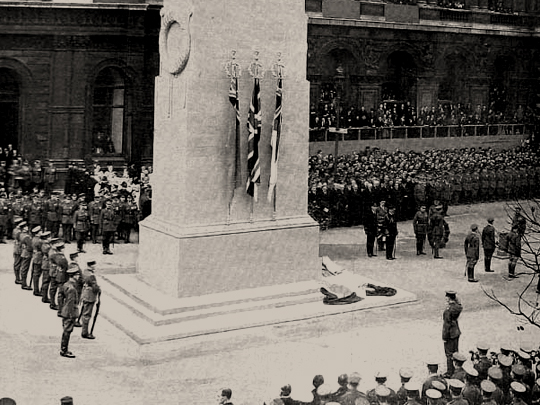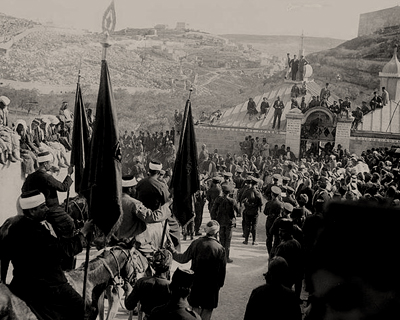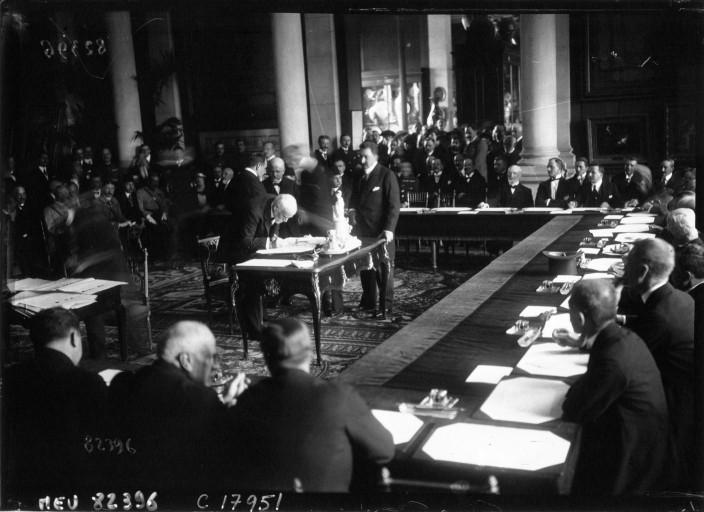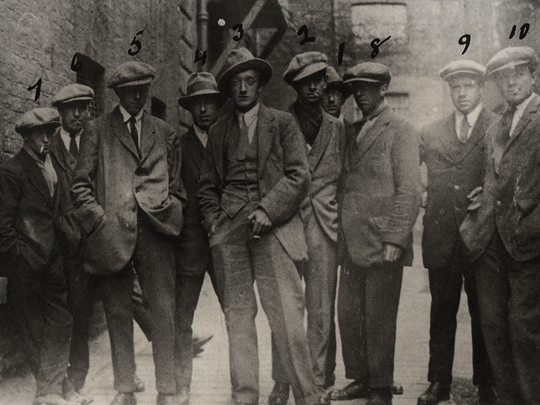Wikimedia Commons / CC-BY-SA-3.0 / GFDL
1 – Bloody Sunday in Croke Park, Dublin
Bloody Sunday was a day of violence in Dublin on 21 November 1920, during the Irish War of Independence.
In total, 31 people were killed, including eleven British soldiers and police, sixteen Irish civilians, and three Irish republican prisoners.
The day began with an Irish Republican Army (IRA) operation to assassinate the ‘Cairo Gang’ (purportedly pictured above), a team of undercover British intelligence agents working and living in Dublin.
IRA members went to a number of addresses and shot dead 14 people: 9 British Army officers, a Royal Irish Constabulary (RIC) officer, 2 members of the Auxiliary Division, 2 civilians, and one man whose exact status is uncertain.
Later that afternoon, members of the Auxiliary Division and RIC opened fire on the crowd at a Gaelic football match in Croke Park, killing 14 civilians and wounding at least 60.
That evening, 3 IRA suspects being held in Dublin Castle were beaten and killed by their captors, who claimed they were trying to escape.
Overall, Bloody Sunday was considered a great victory for the IRA, as the operation severely damaged British intelligence, while the later reprisals did no real damage to the guerrillas but increased support for the IRA at home and abroad.
2 – The Memorial Services of Unknown Soldiers Take Place in London and Paris

During the First World War, the British and French armies who were allies during the war jointly decided to bury soldiers themselves.
In Britain, under the Imperial War Graves Commission, the Reverend David Railton had seen a grave marked by a rough cross while serving in the British Army as a chaplain on the Western Front, which bore the pencil-written legend “An Unknown British Soldier”.
He suggested the creation of a symbolic funeral and burial of an “Unknown Warrior”, proposing that the grave should in Britain include a national monument in the form of what is usually, but not in this particular case, a headstone.
The idea received the support of Prime Minister David Lloyd George. At the same time, there was a similar undertaking in France, where the idea was debated and agreed upon in Parliament.
Britain and France conducted services connected with their ‘monumental’ graves on Armistice Day 1920 (the burial itself taking place later in January of the following year in France).
In Britain, the Tomb of the Unknown Warrior was created at Westminster Abbey, while in France ‘La Tombe du Soldat inconnu’ was placed in the Arc de Triomphe.
3 – Nebi Musa Riots

The 1920 Nebi Musa riots took place in the British-controlled part of OETA (which would shortly become Mandatory Palestine) between the 4th and 7th of April 1920 in and around the Old City of Jerusalem.
Five Jews and four Arabs were killed, and several hundred were injured. The riots coincided with the Nabi Musa festival, which took place every year on Easter Sunday and followed rising tensions in Arab-Jewish relations.
The events came shortly after the Battle of Tel Hai and the increasing pressure on Arab nationalists in Syria in the course of the Franco-Syrian War.
Speeches were given by Arab religious leaders during the festival, which included slogans referencing Zionist immigration and previous confrontations around outlying Jewish villages in the Galilee.
The trigger which turned the procession into a riot is not known with certainty. The British military administration of Palestine was criticized for withdrawing troops from inside Jerusalem and because it was slow to regain control.
As a result of the riots, trust between the British, Jews, and Arabs eroded. One consequence was that the Jewish community increased moves towards an autonomous infrastructure and security apparatus parallel to that of the British administration.
In its wake, the sheiks of 82 villages, claiming to represent 70% of the population, issued a document protesting the demonstrations against the Jews.
4 – Treaty of Sèvres Dissolves Ottoman Empire

The Treaty of Sèvres was one of a series of treaties that the nations constituting the Central Powers signed subsequent to their defeat in World War I.
The treaty was signed on 10 August 1920, in an exhibition room at the Manufacture Nationale de Sèvres porcelain factory in Sèvres, France.
The Sèvres treaty marked the beginning of the partitioning of the Ottoman Empire and its ultimate annihilation.
The terms it stipulated included the renunciation of all non-Turkish territory that was part of the Ottoman Empire and their ceding to the Allied administration.
Notably, the ceding of Eastern Mediterranean land allowed the creation of, amongst others, the British Mandate of Palestine and the French Mandate of Syria.
5 – Women’s Suffrage Granted in the United States

Women’s suffrage in the United States was passed by Congress on June 4, 1919, and ratified on August 18, 1920.
This, the 19th amendment, guaranteed all American women the right to vote. Achieving this milestone required a lengthy and difficult struggle; victory took decades of agitation and protest.
The Nineteenth Amendment became part of the U.S. Constitution on August 26, 1920. This was after the necessary 36 state legislatures had been achieved.
It states, “The right of citizens of the United States to vote shall not be denied or abridged by the United States or by any State on account of sex.”
It took over 60 years for the remaining states to ratify the 19th Amendment, with some taking longer than others.
Mississippi was the last to do so, on March 22, 1984, 64 years after the law was enacted nationally.
